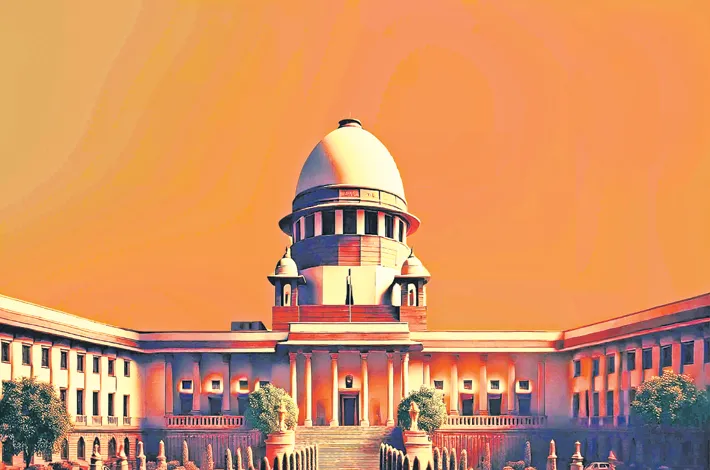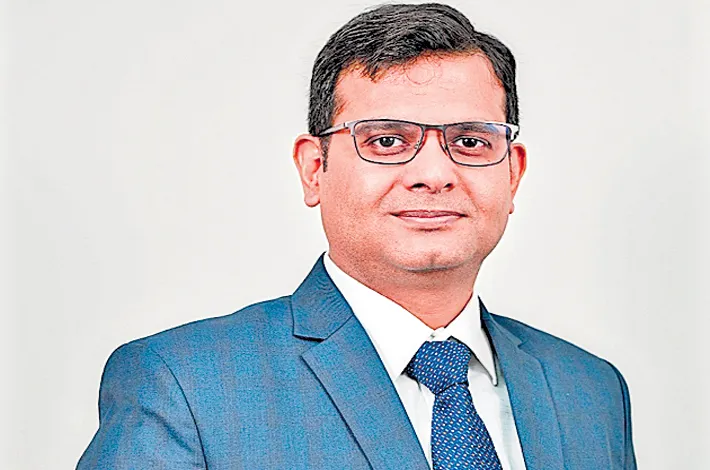Bulldozer justice- A fascist toolkit?
08-10-2025 12:00:00 AM

No place for arbitrary state action
- Article 14: Ensures equality before the law and prohibits arbitrary state action, making selective demolitions unconstitutional.
- Article 21: Protects the right to life and personal liberty, including the right to shelter, violated by punitive demolitions without due process.
- Article 300A: Guarantees the right to property, requiring legal procedures and compensation for any deprivation, which bulldozer actions often bypass.
The Indian government, particularly BJP-led state administrations, frames bulldozer justice as an unflinching commitment to law and order. Uttar Pradesh Chief Minister Yogi Adityanath has been its most vocal proponent, declaring in 2022 that the bulldozer is not just a machine but a message to mafias and rioters. Officials however insist these actions target illegal encroachments under municipal laws, not communities. "Demolitions follow due process—surveys, notices, and court orders," asserts UP's Principal Secretary, emphasizing that only unauthorized structures on public land are razed.
What began as a localized tactic against alleged criminals has morphed into a nationwide controversy; disproportionately targeting the marginalized sections. This phenomenon raises profound questions about the rule of law in the world's largest democracy. Is it a swift tool for enforcing order, or a blatant subversion of constitutional safeguards? As of October 2025, the Supreme Court of India has intervened decisively, outlawing punitive demolitions and mandating strict guidelines.
The evolution
Bulldozer justice didn't emerge overnight; it was forged in the fires of electoral politics and communal tensions. The term traces its roots to 2017, when Yogi Adityanath assumed office as Chief Minister of Uttar Pradesh (UP), India's most populous state. A BJP stalwart, he invoked the bulldozer as a metaphor for zero-tolerance governance during his campaign. "If someone hurls stones at the administration, the government will respond with iron nails," was the narrative, but it was the bulldozer that became his signature symbol. The practice gained traction in 2020 amid crackdowns on notorious criminals like gangster Vikas Dubey, whose properties were demolished in a blaze of media glory. Videos of these spectacles played on loop, earning Adityanath the moniker "Bulldozer Baba.
What started as targeted actions against mafia elements soon expanded. In UP's Prayagraj, activist Javed Mohammed's home was razed mere hours after he was accused of stone-pelting during Friday prayers. Similar scenes unfolded in Madhya Pradesh's Khargone after communal riots, where over 50 Muslim-owned structures were flattened. The trend spread like wildfire to BJP-ruled states: Gujarat, Haryana, Assam, and even Delhi under the Aam Aadmi Party (AAP). Amnesty International documented 128 punitive demolitions between April and June 2022 alone, affecting 617 people, predominantly Muslims.
Bulldozers transcended utility, becoming cultural icons: parade floats in victory processions, tattoos on supporters' arms, even motifs on snack packets. Yet, this "quick justice" masked a darker reality: a punitive populism where majoritarian sentiments trumped legal norms, evoking comparisons to authoritarian tactics or historical colonial reprisals. As evictions escalated, civil society mobilized. Petitions flooded the Supreme Court, clubbed under Jamiat Ulama-i-Hind's lead case. The turning point came in 2024, when the apex court began hearings, culminating in a landmark ban. From a niche enforcement tool to a symbol of state overreach, bulldozer justice's evolution mirrors India's polarized polity, where law bends to electoral whims.
What the Opposition Says
Opposition parties have lambasted bulldozer justice as a "fascist toolkit" designed to terrorize weaker sections, especially minorities and stifle dissent. Leader of Opposition in Lok Sabha Rahul Gandhi called it a "demolition of constitutional values," accusing the BJP of weaponizing state machinery against Muslims to polarize voters. In 2023, after Haryana's Nuh demolitions displaced thousands, he tweeted, "Bulldozers aren't fighting crime; they're bulldozing India's soul." Critics counter that "due process" is a veneer. Notices are often post-facto or served after demolitions, as seen in Gujarat's 2023 drives.
Yet, the government's stance resonates with a public weary of impunity, positioning bulldozers as symbols of a "strong state." Even as the Supreme Court intervened in 2024, the Centre maintained in affidavits that states act within constitutional bounds, urging judicial restraint. This defense—rooted in administrative efficiency—clashes with accusations of selective vigilantism, but for proponents, it is the governance being unapologetically muscular.
Samajwadi Party's Akhilesh Yadav, Adityanath's arch-rival in UP, mocked the BJP's emblem as a "bulldozer of injustice," linking it to youth unemployment and women's safety failures. "They crush homes instead of building them," he quipped during 2022 elections. AAP's Arvind Kejriwal, despite his Delhi government's complicity in some drives, decried it as "extortion politics." In Parliament, the INDIA bloc staged protests, with Mallikarjun Kharge decrying it as "bulldozer authoritarianism" akin to Emergency-era excesses. Petitions from NGOs like Jamiat Ulama-i-Hind, backed by opposition MPs, urged the Supreme Court to intervene. Critics like CPI(M) leader Brinda Karat argue that it targets Muslims in particular, distracting from governance lapses—UP's crumbling infrastructure amid 2024 floods. Even non-BJP states like Rajasthan under Congress briefly adopted it pre-elections, drawing intra-opposition ire.
What legal experts say?
Legal luminaries view bulldozer justice as a frontal assault on constitutionalism. Senior advocate and former Union Minister Kapil Sibal asserted that it was “vigilantism depicted as enforcement” and penned several articles against it. Experts invoke Article 21's right to life and shelter, arguing demolitions without hearings violate natural justice. Gautam Bhatia, a constitutional scholar, calls it "punitive populism," where mob fury dominates due process, echoing the “rule of law.” principle. Former Supreme Court Judges like Justice Madan B. Lokur signed open letters to the Chief Justice in 2022, terming it "subversion of the rule of law" and urging contempt proceedings against errant officials. Justice Govind Mathur, ex-Chief Justice of Uttarakhand High Court, praises the 2024 SC verdict as a "turning point," but warns implementation hinges on accountability.
Instances of misuse
Misuse abounds, turning "encroachment drives" into vendettas. In Khargone 2022, post-Ram Navami clashes, 50+ homes/shops were demolished overnight, mostly those belonging to Muslims, notices served post-facto. Amnesty flagged it as "retaliatory," ignoring Hindu encroachments nearby. Delhi's Jahangirpuri 2022 saw MCD raze a colony after riots; SC halted it mid-way, exposing sham surveys. Udaipur 2024: Rashid Khan's home flattened sans notice over his son's alleged crime, despite PMAY(government housing scheme for poor people) legality. In Assam 2023, 500+ Muslim structures vanished in "eviction drives," evicting 2,000 amid citizenship fears. Political misuse peaked pre-elections—Congress government in Rajasthan (2023) bulldozed 100+ sites to ape BJP. Haryana's Nuh post-2023 violence displaced 5,000, high court slamming "ethnic cleansing." Violations? No hearings, collective punishment, selective targeting. As SC noted in 2024, these "high-handed acts" evoke "lawless anarchy," with officials selfie-ing amid ruins. Misuse isn't aberration; it's the blueprint.
Significant judgements about it
The Supreme Court has progressively dismantled bulldozer justice. Pivotal was April 2022's Jahangirpuri intervention: Justices L. Nageswara Rao and B.R. Gavai stayed MCD demolitions, questioning "retaliatory" timing post-riots. Tagged petitions culminated in the landmark November 13, 2024, ruling (In Re: Demolition of Structures): Justices Gavai and Viswanathan outlawed punitive demolitions, deeming them "unconstitutional" under Articles 14, 21, and 300A. Guidelines include: 15-day notices via registered post/online; personal hearings; video-recorded surveys; no action sans reasoned orders. Violations invite contempt; exceptions for court-ordered or public land encroachments. Earlier, September 2024's interim stay halted all demolitions pending guidelines.
Chief Justice B.R. Gavai, architect of the 2024 verdict, reiterated his stance recently at Mauritius' Sir Maurice Rault Memorial Lecture. "The Indian legal system is governed by the rule of law, not by the rule of the bulldozer," he declared, invoking his November 13, 2024, judgment. He made it clear that bulldozing action means breaking the law; the government cannot be judge, jury, and executioner. He lambasted demolitions as "chilling sights of lawlessness," violating Article 21's shelter right and inflicting "collective punishment." Gavai traced rule of law's evolution as a safeguard against arbitrariness.
Bulldozer justice, once seen as a political badge of honor, now stands condemned as a constitutional affront. From its 2017 genesis in UP's tough-on-crime theater to the SC's 2024 ban and Gavai's 2025 reaffirmation, it exposes democracy's fault lines: communal bias, executive hubris, and eroded trust. Victims—displaced families clutching PMAY deeds—embody the cost, while misuses in Nuh and Khargone scar the social fabric. As of now, government defense sounds hollow against opposition fury and expert indictments. The SC's guidelines offer hope, but enforcement demands vigilance—prosecutions, compensations, and legislative teeth. As India navigates 2025's polls, the bulldozer's roar must yield to the Constitutional principles of equality, dignity, rule of law. Only then can homes be built, not buried.








